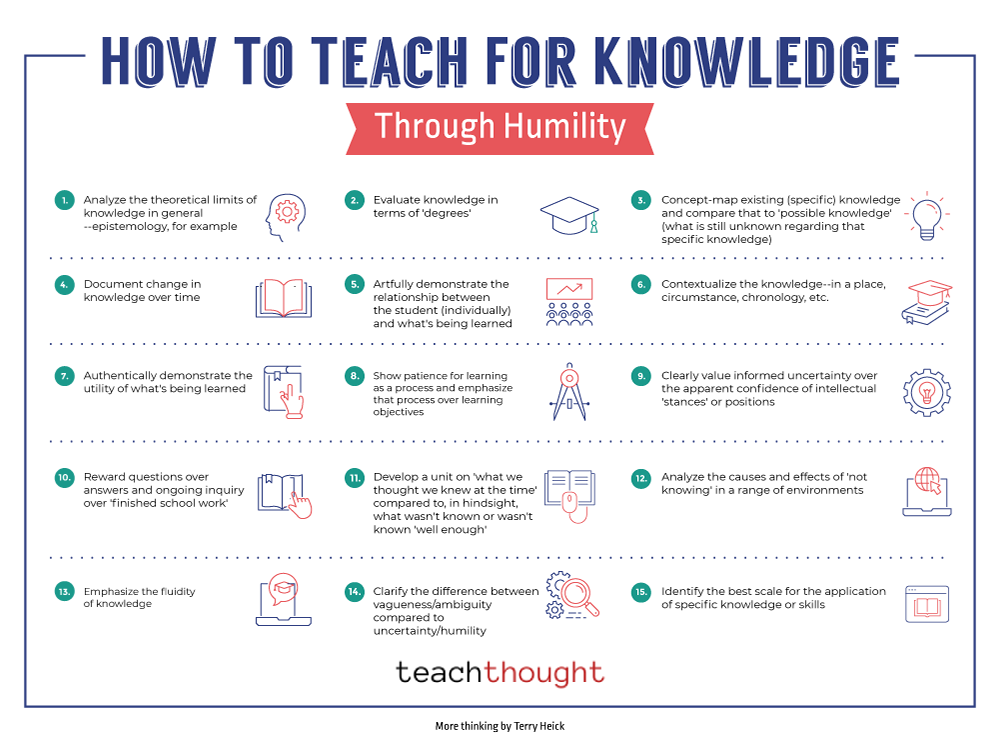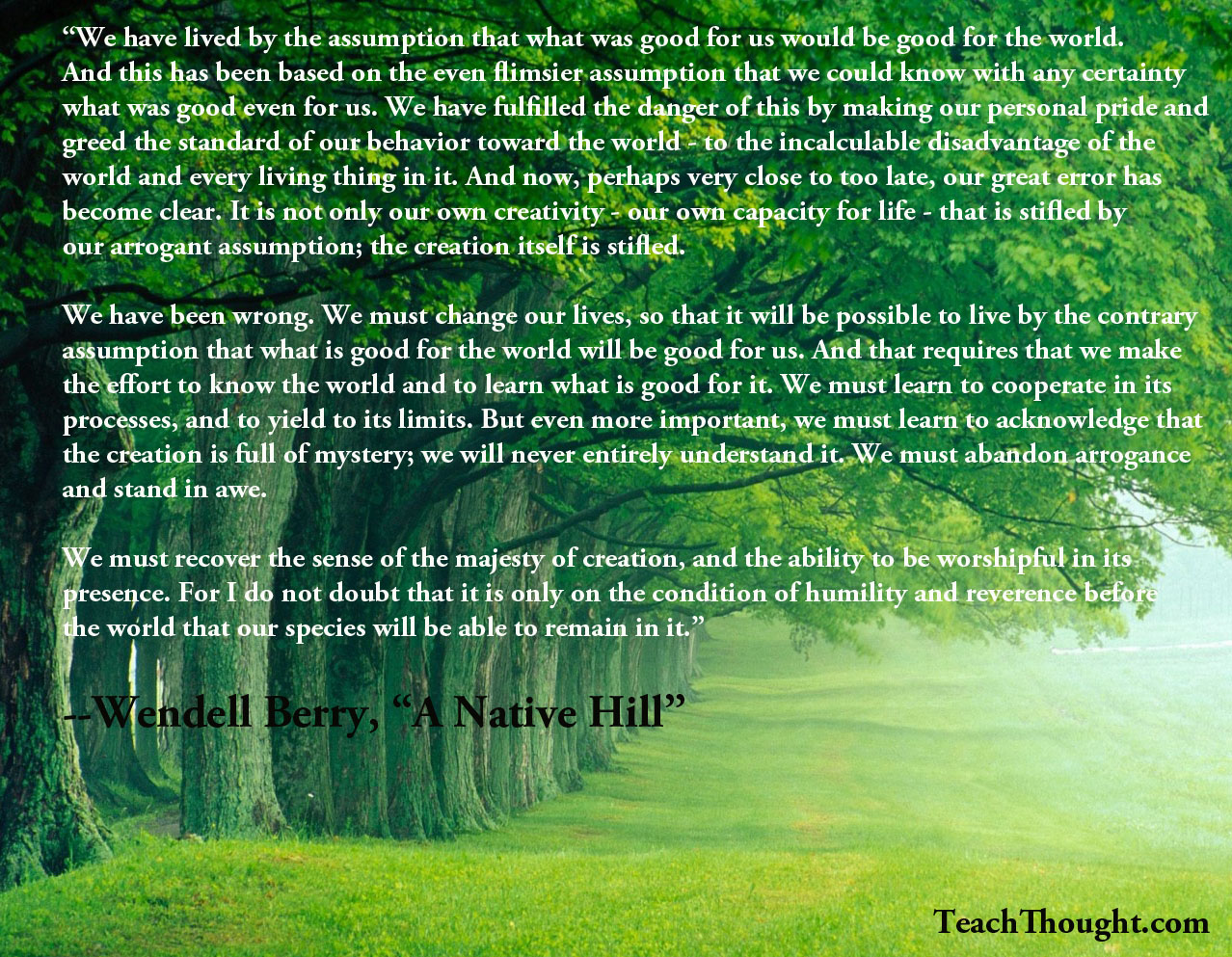

by Terry Heick
Humility is a fascinating beginning factor for learning.
In a period of media that is digital, social, chopped up, and constantly recirculated, the difficulty is no more access however the top quality of gain access to– and the response to after that evaluate unpredictability and “truth.”
Discernment.
On ‘Recognizing’
There is an alluring and deformed sense of “understanding” that can bring about a loss of reverence and also privilege to “know points.” If nothing else, contemporary technology access (in much of the globe) has changed subtlety with phenomenon, and process with accessibility.
A mind that is correctly watchful is additionally properly simple. In An Indigenous Hill , Wendell Berry indicates humbleness and restrictions. Standing in the face of all that is unknown can either be frustrating– or lighting. Just how would certainly it alter the understanding procedure to begin with a tone of humbleness?
Humility is the core of important reasoning. It states, ‘I don’t understand enough to have an educated opinion’ or ‘Allow’s learn to reduce unpredictability.’
To be self-aware in your own understanding, and the limitations of that understanding? To clarify what can be understood, and what can not? To be able to match your understanding with an authentic demand to recognize– job that normally reinforces critical assuming and continual query
What This Resembles In a Class
- Examine the limits of knowledge in plain terms (a straightforward intro to epistemology).
- Review knowledge in degrees (e.g., certain, probable, possible, not likely).
- Concept-map what is presently comprehended concerning a specific topic and compare it to unanswered questions.
- Document exactly how knowledge modifications in time (personal learning logs and historic snapshots).
- Show how each student’s point of view forms their connection to what’s being found out.
- Contextualize understanding– location, scenario, chronology, stakeholders.
- Show genuine energy: where and exactly how this understanding is made use of outside institution.
- Show patience for discovering as a process and highlight that procedure along with purposes.
- Plainly value informed unpredictability over the self-confidence of quick conclusions.
- Award ongoing inquiries and follow-up examinations greater than “completed” responses.
- Develop an unit on “what we assumed we knew after that” versus what hindsight reveals we missed.
- Evaluate domino effects of “not understanding” in scientific research, background, civic life, or daily decisions.
- Highlight the fluid, progressing nature of understanding.
- Separate vagueness/ambiguity (absence of clearness) from uncertainty/humility (understanding of limitations).
- Recognize the most effective scale for applying certain expertise or abilities (person, regional, systemic).
Study Note
Research study reveals that people who practice intellectual humility– being willing to confess what they do not know– are much more open up to discovering and less most likely to hold on to incorrect assurance.
Resource: Leary, M. R., Diebels, K. J., Davisson, E. K., et al. (2017 Cognitive and interpersonal functions of intellectual humbleness Personality and Social Psychology Publication, 43 (6, 793– 813
Literary Example
Berry, W. (1969 “An Indigenous Hill,” in The Long-Legged Residence New York: Harcourt.
This idea might appear abstract and level of place in significantly “research-based” and “data-driven” systems of learning. But that belongs to its worth: it assists pupils see understanding not as dealt with, yet as a living procedure they can accompany care, proof, and humbleness.
Teaching For Knowledge, Learning Via Humbleness

